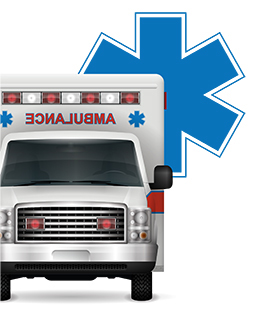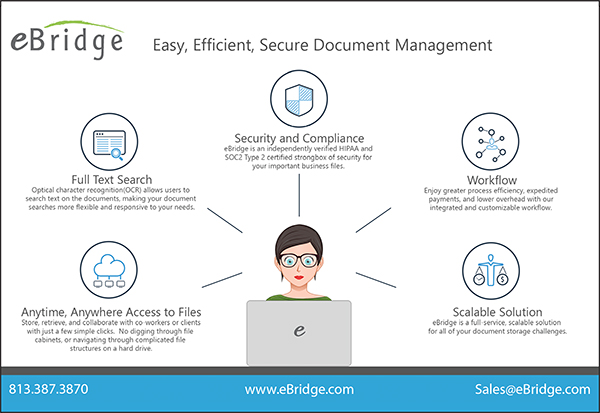It is imperative that billers fully understand the nuances of ambulance reimbursement to be able to successfully sidestep the many landmines of ambulance service billing. This article lays out five of the most important issues.
What follows are five of the most significant issues in ambulance billing. This is by no means an exhaustive list, but includes some of the most common and serious challenges in the world of compliant ambulance billing.
Federal law defines medical necessity for ambulance service as when other means of transportation are contraindicated by the patient’s condition. While CMS regulations and manuals provide some additional clarification, the medical necessity standards for ambulance transport are centered on whether the patient could safely be transported by other means. In other words, if a patient could safely be transported by car, wheelchair van, stretcher van, or any other means, then medical necessity is not met, and reimbursement cannot be made. It is important to note that when assessing medical necessity, only the patient’s condition matters; it is irrelevant if those other means of transportation are unavailable. To put it another way, if the only reason a patient is being transported by ambulance is because they don’t have a car, or that the nursing home’s wheelchair van is out of service, that alone is insufficient to establish medical necessity for an ambulance transport. The mere unavailability of other means of transport does not mean that an ambulance transport will be covered. The medical documentation from the ambulance crew at the time of service—the patient care report (PCR)—must clearly establish that the patient required transport by ambulance. This is vital, and ambulance billers will often find that ambulance PCR documentation is not sufficiently detailed or complete to allow for the level of specificity required under ICD-10 coding. For this reason, we strongly recommend that all ambulance service personnel be specifically trained on proper and compliant documentation practices, such as that offered in the certified ambulance documentation specialist (CADS) course through the National Academy of Ambulance Compliance (NAAC) (www.ambulancecompliance.com). Ambulance billers may not “assume” that medical necessity is met merely by looking at the reported condition of the patient when the ambulance is dispatched. Often, 911 calls and other requests may overstate the condition of the patient, and the assessed condition of the patient may turn out to be different from that for which the ambulance was dispatched. So, ambulance billers must have a complete, clinical picture of the patient’s condition and the need for an ambulance before deciding whether to bill a transport as medically necessary. Ambulance billers must also consider other available documentation in determining medical necessity. For instance, non-emergency ambulance transports generally require a physician certification statement (PCS) supporting medical necessity. While PCS forms are required for most non-emergency ambulance transports to be billable to Medicare, billers must remember that the PCS does not replace the need for a complete, accurate and well-documented ambulance PCR.
Medicare regulations also allow for so-called “lifetime signatures” if the patient has signed an assignment of benefits statement that indicates the signature is valid indefinitely. For an example of a compliant ambulance signature form, visit www.pwwemslaw.com and download the form from the Free Forms Library. It is vital that ambulance crewmembers obtain patient signatures at the time of service whenever possible. Patient signatures can be obtained after the time of service, but this creates more work for ambulance billers and can cause significant delays in the ambulance revenue cycle. Addressing proper signature capture practices is one of the key components of the CADS course mentioned above.
ALS levels of service can be billed only when the skills required to care for the patient exceed the scope of practice of an EMT-Basic in that jurisdiction. Therefore, an ambulance biller must know what the approved scope of practice consists of for EMTs in that jurisdiction, and what skills require licensing or certification above that level. The biggest area of compliance risk with ALS services, however, has been in the application of the so-called “ALS Assessment” rule. Under this rule, Medicare allows the ALS-emergency level of service to be billed when the nature of the ambulance dispatch necessitates an assessment of the patient by an ALS crew, even if the patient does not end up needing ALS interventions. While this rule sounds straightforward on the surface, it has been the subject of much compliance enforcement activity in the ambulance industry in the past few years. Here are two examples to help illustrate proper application of the ALS Assessment rule. Scenario 1: An ambulance is dispatched for a 911 call with a reported condition of “chest pain.” Dispatch protocols would undoubtedly classify this reported condition as an ALS-level call. The ALS ambulance is dispatched and responds emergently. When the crew arrives on scene, the patient denies chest pain but complains of abdominal pain and nausea. The crew assesses the patient and determines that he does not require any ALS interventions, and transports the patient while administering supplemental oxygen through a nasal cannula as the only treatment. Although the administration of oxygen is only a BLS-level skill, the call qualifies for ALS-level billing (provided that medical necessity and other coverage criteria are met, of course) by virtue of the ALS-level dispatch and the immediate response by an ALS crew that was necessitated by the nature of the “chest pain” 911 call.
Scenario 2: An ambulance is dispatched to a local ball field for a report of a possible sprained ankle. The ambulance responds emergently. Under applicable dispatch protocols, the call is classified as a BLS-level call, since the reported condition is not serious and typically does not require ALS-level care. Nevertheless, as is standard practice in many community EMS systems, the ambulance responds with an ALS crew. When the ambulance arrives on scene, the paramedic assesses the patient and determines that he has a possible sprained ankle with no other conditions or complaints, applies an ice pack and splint, and transports the patient uneventfully to the hospital E.D. In this scenario, only BLS-level billing is permissible and the ALS Assessment Rule is inapplicable because the reported nature of the dispatched call indicated that it was a BLS-level response. Some ambulance billers improperly conclude that all 911 calls are billable at the ALS level whenever there is a paramedic or other ALS provider responding on the ambulance. This results in significant overbilling, or “up coding,” of BLS claims to the ALS level. It is not the mere presence of an ALS provider that triggers the ALS assessment rule; an ALS-level emergency call is also required under the EMS system’s dispatch protocols. So, ambulance billers must not assume that every ambulance call with a paramedic on board qualifies for an ALS level of billing.
Say, for instance, that an ambulance PCR documents a patient with no complaints, and with normal and stable vital signs, who is being transported to the hospital. The PCR indicates that the patient is ambulatory and that she walked unassisted and without difficulty to the stretcher. The PCR also indicates that the EMT administered two liters per minute (LPM) of oxygen via nasal cannula. A patient with no complaints and normal vital signs would ordinarily not require the administration of supplemental oxygen; though this particular intervention is often used by EMS providers even when there is no clinical indication for it. In a case such as this, where the documentation provides no basis for the biller to establish medical necessity, the performance of a medical intervention—when there is no medical justification for that intervention documented anywhere in the record—should not be used to “confer” medical necessity on a claim where it does not otherwise exist. In other words, interventions themselves must be medically necessary, and it is the job of the EMS providers to document the clinical need for the interventions. It is not the job of the biller to “assume” that medical necessity exists merely because an intervention was performed.
Two recognized ambulance industry certifications are the Certified Ambulance Coder (CAC) and the Certified Ambulance Compliance Officer (CACO). Both courses are offered by the NAAC. Formalized and ambulance-specific coding and compliance training can also help your agency overcome the “whisper policies” that often occur in a billing office in the absence of formalized and standardized training.
|


 Medical Necessity
Medical Necessity
 Douglas M. Wolfberg, Esq., is an EMS attorney and a founding partner of Page, Wolfberg & Wirth, The National EMS Industry Law Firm. Wolfberg’s firm offers the abc360 conference, the nation’s largest annual ambulance industry revenue cycle management and compliance conference. Wolfberg was a longtime EMS provider and EMS director before becoming an attorney. He works with ambulance services, revenue cycle management companies, and others on ambulance billing and compliance issues nationwide. Contact him at
Douglas M. Wolfberg, Esq., is an EMS attorney and a founding partner of Page, Wolfberg & Wirth, The National EMS Industry Law Firm. Wolfberg’s firm offers the abc360 conference, the nation’s largest annual ambulance industry revenue cycle management and compliance conference. Wolfberg was a longtime EMS provider and EMS director before becoming an attorney. He works with ambulance services, revenue cycle management companies, and others on ambulance billing and compliance issues nationwide. Contact him at